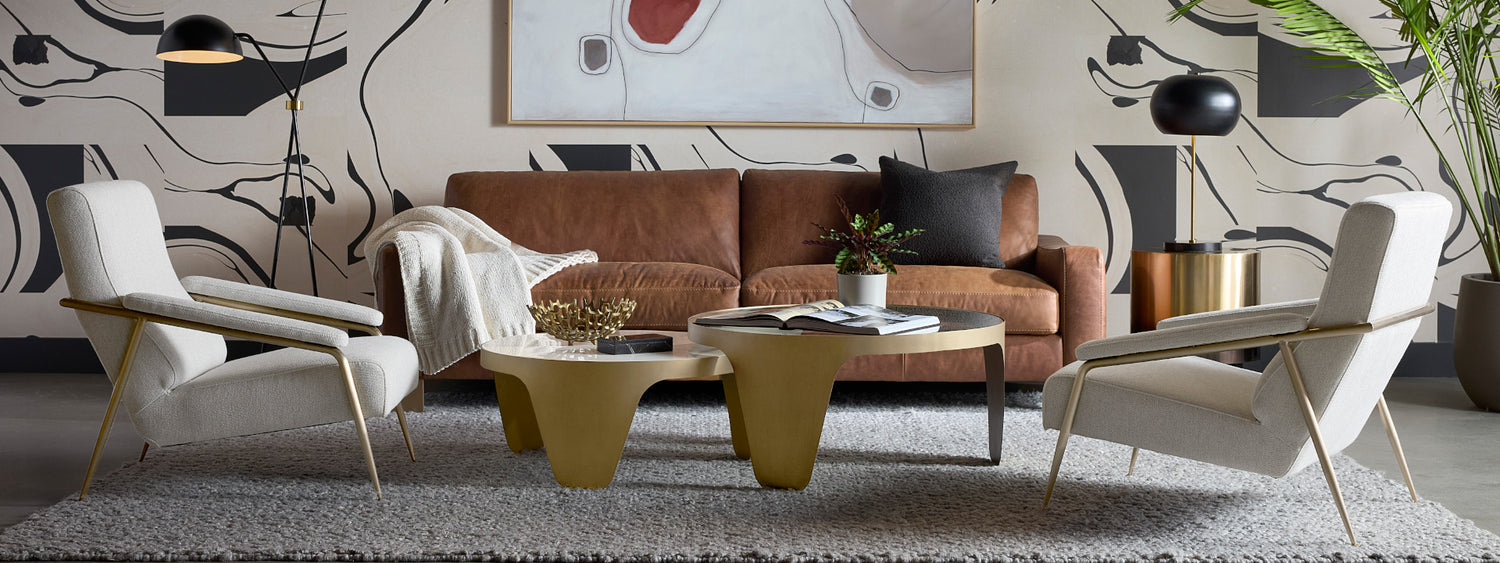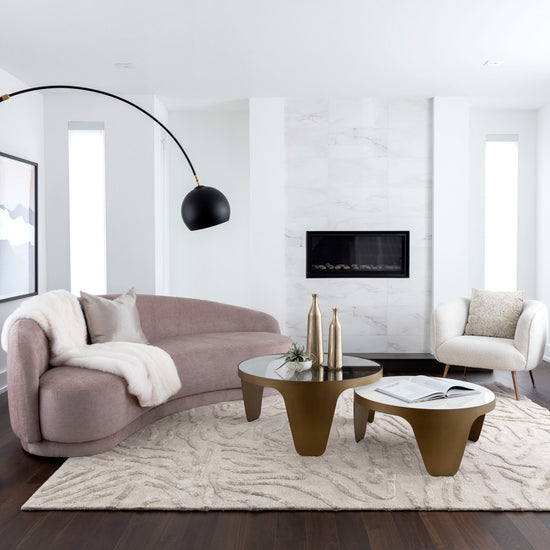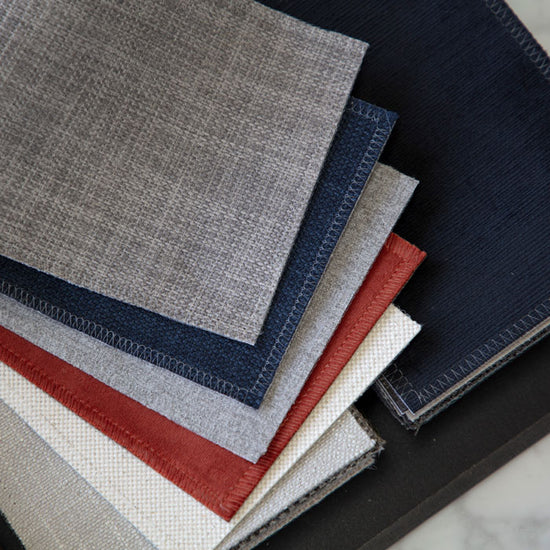PRODUCT CARE
WOOD AND WOOD VENEER
As wood is an organic, porous material, these pieces will contain natural variation of texture and may also exhibit fine indentations and cracks. Wood pieces will also display a disparity of colour and grain, and visible knots and burls. By nature, solid wood will expand and contract in response to the environment’s humidity and temperature; and over time, cracks may develop.
Dust frequently with a clean, damp, lint-free cloth.
Frequent dusting will remove abrasive buildup which can damage a finish over time if needed use an appropriate wood furniture cleaner in the direction of the wood grain followed by a dry lint-free cloth.
Avoid exposing your furniture to strong sunlight, heat outlets, open windows or dampness, prolonged exposure to direct sunlight can fade the finish of your furniture while extreme temperature and humidity changes can cause cracking or splitting.
Do not place hot cups, pots or serving dishes directly onto wooden surfaces. Do not expose your furniture to any liquids and never allow water to sit on your table. Alcohol, nail polish and perfume are also dangerous because they can dissolve the furniture finish on contact and may require professional repairs. Small marks and scratches may be touched up or covered with a marker or touch up stick.
TEAK WOOD
Teak wood has a high oil content that enables its outdoor resistant properties. High oil content is a sign of good quality teak. As a result, our outdoor teak furniture tends to bleed these natural oils when exposed to the elements. The bleeding of teak oil tends to be higher during the first 2-3 months and will subside over time.
In event of a stain, we recommend gently cleaning any cushions or fabrics with a cloth, sponge, or soft brush. Additionally, all SUNPAN outdoor performance fabrics can be hand or machine-washed at 40° C (100° F). After washing we recommend that you re-apply a textile protector, which safeguards the fabric with an invisible, water and stain repellent film. Please see machine wash instructions below:
- Machine wash in lukewarm water (up to 40° C or 100° F) at a gentle setting
- Add bleach when needed.
- Iron at a low setting (110° C or 230° F).
- Do not dry-clean.
- Tumble dry, low permanent press.
METAL, ACRYLIC AND HIGH GLOSS
Wipe dry with a clean dry cloth. If necessary, wipe clean with a damp soft cloth and a mild non-abrasive dish detergent.
Do not place hot cups, pots or serving dishes directly onto the surface. Do not expose your furniture to any liquids and never allow water to sit on your table. Alcohol, nail polish and perfume are also dangerous because they can dissolve the furniture finish on contact and may require professional repairs.
LEATHER
Leather is an organic material; as such markings, wrinkles, grooves, and light scratches are appreciated characteristics of the upholstery and are deemed acceptable. No two pieces will be alike. Over time, leather upholstery will weather and may develop a rich patina.
Genuine leather is typically produced from cow or buffalo hide, which is then treated to produce a supple, waxy and/or pebbled texture and deep color.
To ensure the lasting beauty of leather:
-Keep protected from direct sunlight and heat to prevent drying out and fading.
-Avoid sticky, rough and sharp objects rubbing against the leather.
-Dust with a soft and dry cloth.
-Wipe clean with leather cleaner. Do not use harsh chemicals.
-Condition leather surfaces 2-3 times a year with a leather conditioner.
BONDED LEATHER
Bonded leather is a blend of reconstituted leather and synthetic materials crafted to reflect the natural characteristics of leather; as such it may display markings, wrinkles, grooves and light scratches and will weather over time.
To ensure the lasting beauty of bonded leather:
Keep protected from direct sunlight and heat to prevent drying out and fading.Avoid sticky, rough and sharp objects rubbing against the leather.Dust with a soft and dry cloth.Wipe clean with leather cleaner. Do not use harsh chemicals.Condition leather surfaces 2-3 times a year with a leather conditioner.
FAUX LEATHER
Polyurethane is a polymer that is considered to be a highly resilient, flexible and durable material. Multiple layers of PU, as it commonly referred to, are combined to create faux leather. It is becoming increasingly popular as an upholstery material both in residential and contract uses due to its unique benefits. It is not only durable but also supple, soft to the touch and has an attractive appearance.
Faux leather is manufactured to reflect the natural characteristics of leather. In doing so, markings wrinkles, grooves, and light scratches are appreciated characteristics of the upholstery and are deemed acceptable. No two pieces will be alike.
To ensure the lasting beauty of faux leather:
-Keep protected from direct sunlight and heat to prevent drying out and fading.
-Avoid sticky, rough and sharp objects rubbing against the faux leather.
-In many instances, a clean, damp cloth is all that is needed to remove dirt and grime.
If further cleaning is required, please consider the following recommendations:
-Soiled areas should be cleaned as soon as possible.
-We recommend using non-abrasive, water-based cleaners, soap, and water. Add 1 tsp of mild liquid dish detergent to 16 oz of water.
-Use a clean cloth dampened with the appropriate cleaning solution and apply to the affected areas. Blot the fabric with the cloth, working from the outer edge of the stained area and moving toward the centre. To effectively draw out the stain, renew the cleaning cloth as often as necessary to maintain absorbency.
-Rinse cloth with fresh water and wipe affected area to remove any residue from the soap and water. Wipe dry with a clean cloth.
-For challenging stains (such as hair oil, soft drinks, chocolate, candy, etc.) wipe affected area with a soft cloth using a mild upholstery cleaner. Rinse cloth with fresh water and wipe affected area to remove any residue. Wipe dry with a clean cloth.
Download More
PERFORMANCE FABRIC
All spills should be treated promptly for best results and ease of removal. Most spills can be cleaned by gently blotting the spill with a clean, dry, absorbent cloth. The use of a clean, dry, absorbent cloth alone may not completely remove the spill. For further treatment, use a water-based soap mixture that combines 1 tablespoon of a liquid detergent such as Tide, with 16 ounces of lukewarm water. Dampen the cleaning cloth in the mixture and gently blot the soiled area. Avoid rubbing affected area aggressively. Rinse the area with a clean, damp cloth to ensure that all of the soap residue has been removed.
MARBLE
To clean, dust the surface once or twice a week with a soft cloth. Wash the marble periodically with a cloth dampened with warm water. If necessary, use a small amount of mild dishwashing liquid and wipe clean with another damp cloth. Never use dusting sprays or abrasive cleaners on marble. Real marble is porous and is sensitive to staining from heat, liquids or other substances.
To prevent ring marks, place coasters or trivets under glasses and dishes. Use mats or runners beneath hard objects that might scratch the surface. Always blot up spills immediately and rinse with a clean, damp cloth. If your marble does stain, please seek professional advice.
Due to its organic composure, marble may contain natural fissures that resemble cracks. Fissures do not follow a particularly straight line and are present in various areas of the marble. When running a finger over a fissure, it will feel smooth to the touch. On the other hand, cracks are mostly confined to one area of the slab and can run almost all the way through the depth of the stone. When running a finger over a crack, there will be a noticeable unevenness due to the raised surface caused by the crack.
CONCRETE
SUNPAN concrete products are comprised of natural materials such as: granite stone powder, Portland cement, a nylon mesh and water. Much like any natural material such as wood or stone, concrete is a porous material. We have sealed your concrete with a wax sealer that will provide active protection against staining. To ensure the lasting beauty of your concrete surfaces we recommend reviewing and practicing the following care and maintenance instructions.
Clean your product using mild soap (such as dish soap) and water. Do not use heavy abrasive, bleach-based, or ammoniated cleansers. Use of such cleansers will wear down the wax protection and result in less stain resistance. We do not recommend the use of most natural cleansers (which are often citrus based), as the cleaning agent is typically highly acidic and can damage natural materials. We recommend using a mild, non-abrasive, non-ammoniated soap for daily cleaning. Stone soap may also be used for ongoing maintenance and conditioning.
Re-wax periodically. Waxing your product regularly is a quick and easy process that will provide additional protection against staining. Wax once within 2 months of installation of your product and every 3 to 6 months thereafter, depending on use and location. If the product is placed outside, wax it well before winter. Cover and raise off the ground during cold seasons. We recommended any commercially available natural beeswax or carnauba wax that is food safe and non-toxic.
Regular food preparation will not stain the concrete as the acrylic sealer serves as an active barrier. Spills should be wiped up as soon as possible. While the waxing performs well against stains from oils and acidic materials, prolonged exposure may cause penetration of the sealer and possible discoloration.
Expect occasional rings to appear from unknown liquids. Oils, in particular, can penetrate the surface if forced in from the weight of a glass or jar. Wiping up oil spills can minimize staining. Please note that bath oils, in particular, should not be used as they will cause staining from being left in contact with the surface of the concrete for too long. The first stain is always the worst.
Expect the wear of your product to contribute to its uniqueness. Using felt or rubber feet pads are recommended for the bottom surfaces of all objects left to remain on the surface of your product indefinitely, especially unglazed ceramics such as terracotta pots. Unglazed ceramics compete for residual moisture in the concrete and may cause discoloration.
Do not place hot objects on the surface as they may cause discoloration. Using a trivet is recommended. At any point, refrain from putting blue painter's tape or other adhesives directly on the product.
Concrete pieces that are suitable for outdoor use should only be placed in covered areas. To increase the longevity of outdoor pieces, it is recommended that they are covered and sealed during extreme weather, and brought indoors during cold seasons to avoid damage and deterioration.
Will concrete crack? Although not considered a defect, non-structural hairline cracks are possible and may result from shrinkage as the concrete fully cures.
Is concrete structurally reinforced? Using our own proprietary casting process, each piece is custom reinforced with nylon mesh resulting in a product with extremely high strength at only a fraction of the weight of typical concrete.
Natural variations in colour, texture, and porosity may occur and are considered inherent and valued qualities of the material, as well as imperfections and surface scratches. Non-structural hairline cracks are possible and shall not be considered a manufacturing defect. SUNPAN, at its sole option, shall repair or replace a product if it fails solely due to a manufacturing defect during the first year after installation. This does not include reasonable labor charges to repair or reinstall the product and only applies to products that have been handled, fabricated, installed, and maintained in the manner recommended by SUNPAN.
RUGS
Spot clean the rug as needed using a damp (not wet) cloth with water; do not use soap or cleaning products, as they could damage or fade the rug. For larger and deeper stains, we recommend sending the rug to a professional service. Vacuum as needed using suction only, no bristles.
To avoid uneven fading and wear, rotate the rug every 3 months to avoid uneven fading and wear. For hide rugs, rotate every 6 months.
To preserve the life of the rug, we recommend using a rug pad.
To preserve the life of jute rugs, gently brush out broken fibres from rugs. Then vacuum the rug on lowest setting. Do not pull loose ends out by hand. Instead, clip them off with scissors.
To preserve the life of viscose rugs, avoid contact with all liquids, including water. Gently blot spills immediately with a clean sponge or cloth. Professional cleaning is also recommended. Place viscose rugs in a cool, dry area. Exposure to moisture can cause the fibres to yellow.
FEATHER FILLED CUSHIONS
Feather-filled cushions are designed to offer luxury comfort and breathability.
Each cushion is designed with a cover to reduce feather escape. However, the occasional feather escape will occur. This is a normal characteristic for feather-filled products. Due to the nature of feathers, these cushions require more maintenance than traditional foam filled cushions. Through day-to-day use, cushions will display a “lived in look” and will require regular rotation and fluffing.
NATURAL PAPER ROPE / RATTAN
To freshen up a paper rope seat, gently wipe using a cloth tightly wrung with a neutral colorless soap solution. It is not advised to do this too often as it can wear the paper cord unnecessarily.
If there is a spill, remove as much of the fluid as possible with a tightly wrung soft cloth. Be careful to not rub the liquid further into the paper rope, instead carefully blot the affected area. Do not use washer liquid on the wicker.
Due to the natural contents of natural paper rope, it is advised to avoid contact with strongly dyed fabrics, as the seat may become discoloured. To prevent stains, a cushion on the seat is recommended. Natural material is designed to patinate beautiful over time.
Paper rope is a natural, durable material and will last many years. If necessary, it can be replaced or repaired by a skilled craftsman.
OUTDOOR PERFORMANCE FABRIC
SUNPAN uses high-performance synthetic Sunproof® fabric made from polyester and olefin fibres. They offer mildew-resistant properties and a minimal absorbency of liquids.
That being said, all spills should be treated promptly for best results and ease of removal. Most spills can be cleaned by gently blotting the spill with a clean, dry, absorbent cloth.
All Sunproof® outdoor performance fabrics can be hand or machine washed at 40° C. After washing we recommend that you re-apply a textile protector, which coats the fabric with an invisible, water and stain-repellent film. Please see machine wash instructions below:
- Machine wash in lukewarm water (up to 40° C or 100° F) at a gentle setting
- Add bleach when needed.
- Iron at a low setting (110° C or 230° F).
- Do not dry-clean.
- Tumble dry, low permanent press.



